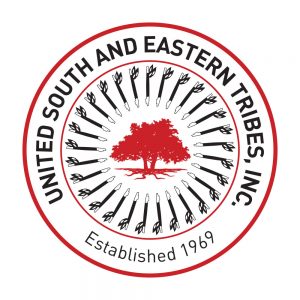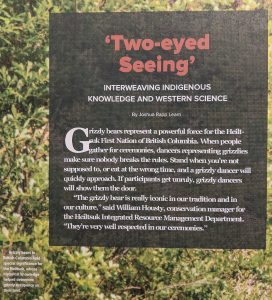The Rappahannock Tribe engages in environmental advocacy and conservation of natural resources in its homeland, the lower Rappahannock and Mattaponi river watersheds. The Department of Environmental Services represents Rappahannock Indigenous Traditional Ecological Knowledge in regional, state, and federal forums.
“Mother Earth is not a resource, she is an heirloom.”
– David Ipina, Yurok Tribe (California)
Blueback herring and Alewife (“river herring”) were historically a subsistence food source for Virginia’s indigenous river people, including the Rappahannock Tribe. As recently as the 1940s, Rappahannocks were documented preserving several thousands of these fish with salt each spring. In recent decades overharvesting and habitat degradation has decreased their populations in the Chesapeake Bay watershed such that possession of these fish in Virginia is now illegal. The Rappahannock Tribe is working with partner scientists to share traditional knowledge about river herring.
DES Newsletter Articles
Doing More with Less: Inequities in Tribal Fish & Wildlife Funding – Native American Fish and Wildlife Society (nafws.org) April 2022
Oct 2021 TEK Forum with Smithsonian, W&M
Smithsonian’s Working Land and Seascapes Rappahannock River Herring presentation
Scholarships, JOBS and Internships > None at this time, please check back.

Rappahannock Tribe environmental partners include United South & Eastern Tribes (USET), the Institute for Tribal Environmental Professionals (ITEP), the Native American Fish and Wildlife Society (NAFWS), and the Eastern Band of Cherokee Indians Natural Resources.
Agency and NGO partners include the Virginia Department of Wildlife Resources, Chesapeake Conservancy, the Smithsonian Environmental Research Center – Chesapeake WLS, and The Wilderness Society.
Are there unique natural resources on or near my property? Are there species of concern nearby?
Find out more with mapping tools at Virginia Department of Conservation and Recreation’s Natural Heritage Area Data Explorer
Can I eat the fish I catch?
Learn about Virginia’s fish consumption advisories for toxins like mercury & PCBs
A list of advisories Interactive map
I want learn more about birding. What kind of resources are available to me?
Check out the Virginia Bluebird Society. Nest boxes helped rescue bluebirds from near-extinction!
Are bigger birds your thing? Learn more about Bald Eagles and Peregrine Falcons in Virginia.
Need a place to play? Check out the Rappahannock River Valley National Wildlife Refuge on the Northern Neck, home of the historic Fones Cliffs.

LEARN More about TEK and the Rappahannock watershed
How Returning Lands to Native Tribes Is Helping Protect Nature – Yale E360
Yale 360 > Native Knowledge: What Ecologists Are Learning From Indigenous People
Traditional Knowledge and NHPA Section 106
Sturgeon in the Pamunkey, by Plough, et al 2021
Two-Eyed Seeing article from The Wildlife Professional 2020
I live in the Lower Rappahannock watershed. Can I get assistance with a living shoreline, rain garden, pollinator garden, or oyster restoration? Contact Friends of the Rappahannock Tidal Office in Tappahannock:
Brent Hunsinger
(804) 443-3448
brent.hunsinger@riverfriends.org